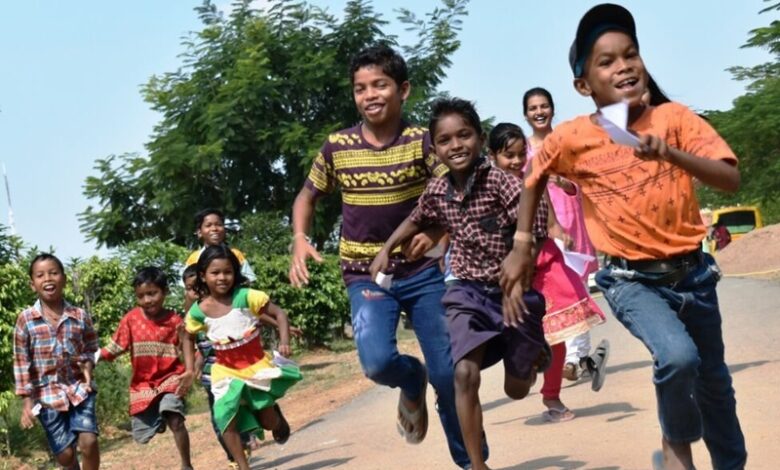Family first: What foster care needs to succeed in India
News Mania Desk / Piyal Chatterjee / 16th February 2025

India’s child safeguarding system faces an issue. Regulated by the Juvenile Justice (Care and Protection of Children) Act, 2015, also known as the JJ Act, 2015, the framework is intended to meet the care, safety, and rehabilitation requirements of children who are orphans or experiencing abuse, neglect, abandonment, or other emergencies. Currently, it depends significantly on institutional care, specifically child care institutions (CCIs). Nonetheless, these institutions are intended to serve as a ‘last-resort measure.’
In recent times, a heightened emphasis on family-oriented care has led to enhanced initiatives aimed at aiding families experiencing economic hardship, or for whom childcare is a financial strain, by providing them with support via state-sponsored assistance programs. These programs are designed to support families in raising their children at home, thus avoiding the necessity of institutionalization caused by financial difficulties.
Nevertheless, for numerous children, staying with their families isn’t viable because the family is hesitant to care for them, or the family is considered ‘unsuitable’ for their upbringing. Once admitted to a CCI, numerous children find themselves in long-term institutional care and are stripped of their right to develop in a family setting. This issue was recently raised by the Supreme Court too. Kids in the ‘orphan, abandoned, and surrendered’ (OAS) group who are over six years old also face a comparable predicament. As they grow older, their prospects of being adopted drop considerably, since around 80 percent of adoptive parents favor kids younger than two years old. According to a report from the Ministry of Women and Child Development in 2018, among the 3.7 lakh children in CCIs nationwide, over 50,000 children fall within the OAS category and are aged between 7 and 18 years.
Foster care is a system that offers children in need of care and protection—aged over six and unable to stay with their biological parents—the chance to develop in a family setting. It is especially appropriate for children needing short-term care away from their families and are housed in CCIs because there are no other options. These children might originate from families facing short-term crises, including the death or separation of parents, financial difficulties, parental imprisonment, terminal illness, the necessity to relocate for employment, or other factors that hinder the parents’ capacity to nurture and raise the child.
Foster care was initially integrated into India’s juvenile justice framework via the Juvenile Justice (Care and Protection of Children) Act, 2000, also known as the JJ Act, and experienced considerable modifications with the JJ Act’s re-enactment in 2015. The procedures for administration and operation of foster care are detailed in the Model Guidelines for Foster Care, initially released by the central government in 2016 and subsequently updated in 2024. It is carried out by local child welfare agencies that include the District Child Protection Unit (DCPU) and the Child Welfare Committee (CWC).
Foster care differs from adoption. It is a short-term care setup for a child in need, where the care duration can vary from a few months to several years depending on the child’s situation. In foster care, the legal bond between the child and their biological relatives stays unchanged, and the child does not acquire inheritance rights from the foster family. In contrast, adoption refers to the permanent placement of a child with a family of adoptive parents. Adoption formally terminates the connection between the child and their biological family, creating a legal bond with the adoptive parents.
The 2024 Model Guidelines for Foster Care have updated various sections of the 2016 guidelines and added new strategies to enhance the accessibility and attractiveness of foster care for potential foster parents, all while maintaining children’s rights. This article explores the main features of the 2024 guidelines and presents suggestions for enhancing foster care systems and procedures in India.
As per the Model Guidelines, 2024, every child requiring care and protection over the age of six, as outlined by the JJ Act, 2015, qualifies for foster care. Moreover, it presents two new terms—‘children without visitation’ and ‘children with unqualified guardians’—to emphasize typical results for those who find themselves in extended institutional care. ‘Children with no visitation’ denotes those who have not received visits from their parents or family members for over a year, whereas ‘children having unfit guardian’ indicates those whose parent or caregiver is either unable or unwilling to fulfill their parenting role, or is considered inappropriate for parenting according to the stated criteria.
An extensive application procedure with minimal assistance to guide through it. Foster parents have voiced concerns regarding the availability of post-placement support, which includes need-based counseling for the child and help with documentation needed at important times like school admissions. Concerns regarding the birth parents taking back the child, resulting in the end of foster care. The lengthy time needed for foster care to move to adoption—five years until the 2024 guidelines were announced—was especially difficult for older children; for example, a 14-year-old in foster care would probably age out before adoption could take place. Additional criteria specific to each state include the condition that parents must own a home (Delhi) or possess a minimum household income of INR 45,000 and live in urban locations (Maharashtra).
The 2024 guidelines are a step in the right direction, but can help achieve even better outcomes in foster care by making room for the following recommendations
Evaluation of the child’s appropriateness for foster care
Recognizing children for foster care involves considering more than just eligibility standards, since not every eligible child (specifically, those over six years old requiring care and protection) may be appropriate for such a setup. Aspects like the child’s age, the rationale for their placement in the CCI, the child’s willingness, and the family’s approval for foster care placement need to be thoughtfully evaluated. A comprehensive evaluation by a qualified expert is essential in assessing the child’s appropriateness for foster care.
Evaluation of foster caregivers
When choosing a potential foster parent, it has been noted that attention frequently turns to the parent’s wish to have a child. This might involve scenarios in which a couple wishes to foster due to their inability to have biological kids, and the adoption procedure is lengthy and time-consuming. Or their own kids have matured and left home, providing them with the time and means to look after another child. Although these motivations are legitimate, it is crucial to prioritize the needs of the child. The evaluation must concentrate on determining if the potential parents can offer the emotional support required for a child who might have faced trauma and neglect. Furthermore, the family’s socio-cultural background must be taken into account to guarantee it matches the child’s background, or that the parents are prepared and capable of making required adjustments, consequently reducing any possible adjustment challenges for the child.
Readiness and anticipation management
The appropriate training of potential foster parents is arguably the most essential requirement for a successful foster care placement. Regrettably, the 2024 Model Guidelines do not require particular pre-foster care training for parents. It is crucial that potential foster parents are well-informed about the foster care setup, comprehend what is required from them, and get training on managing scenarios that could occur after the child is entrusted to their care. This involves understanding and acknowledging that foster care is a temporary setup, which can end if the biological parents or family (if accessible), with consent from the CWC, want to reclaim their child. Foster parents must be ready to support interactions between the child and their biological parents or relatives, and should recognize that the child’s actions and behaviors may not align with their expectations because of the child’s previous experiences.
Preparation holds the same significance for the children. Once recognized, children—particularly those who have spent considerable time in institutional care and are familiar with its routines—should receive counseling and an introduction to the expectations of living in a family environment. Getting the child acquainted with the foster parents ahead of placement is also essential.
Support after placement
Although the 2024 Model Guidelines mandate the CWC to perform monthly inspections of foster families to oversee the child’s well-being, families might require more extensive assistance to adequately tackle any issues that may occur. This support may involve help with routine activities like registering the child for school, particularly if the child does not have the necessary paperwork, or obtaining documents that establish their status as foster parents for medical treatment, insurance, education, and travel. Moreover, families might require access to counseling or psychosocial assistance if the child shows behavioral problems. It is crucial for the DCPU to provide essential post-placement assistance to the family.
Enhancing family bonds
The main aim of foster care is to offer temporary support for a child whose family is experiencing difficulties, with the overarching intention of reuniting them with their biological family. Consequently, it is crucial for child welfare agencies to collaborate closely with the biological family throughout foster care to enhance their capabilities and tackle the issues that resulted in the child’s separation. Nonetheless, the 2024 Model Guidelines do not outline the required initiatives for reinforcing families.
It is essential to prioritize family strengthening to maintain the child’s connection with their biological family and to minimize further distress for parents wishing to reunite with their child. Consistent follow-ups are essential to oversee support, record alterations in the family’s situation, and recognize any additional help needed to enable prompt reunification. It should be acknowledged that a parent’s lack of ability or desire to care for their child, which may have led to the separation, can evolve as their situation improves. Measures to strengthen families are meant to be carried out by the DCPU by connecting families to social protection programs, but in practice, these efforts are mostly managed by nonprofit organizations.
Though foster care might appear to be an idea brought from the West, it has strong foundations in Indian culture. Frequently done unofficially as kinship care, families and communities in India have consistently come forward to assist children in need. References from mythology and historical customs emphasize the enduring tradition of nurturing children in extended family settings. In our efforts to enhance foster care in India, we need to draw lessons from the experiences of other nations where the system has occasionally failed to safeguard children. Ultimately, for foster care to succeed, cooperation between the government and community organizations is essential. By working together, we can create a system that both safeguards and supports every child who requires assistance.






